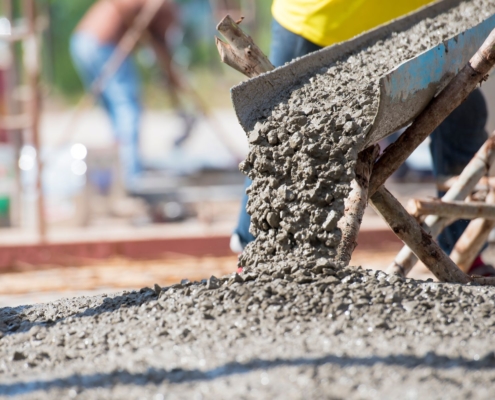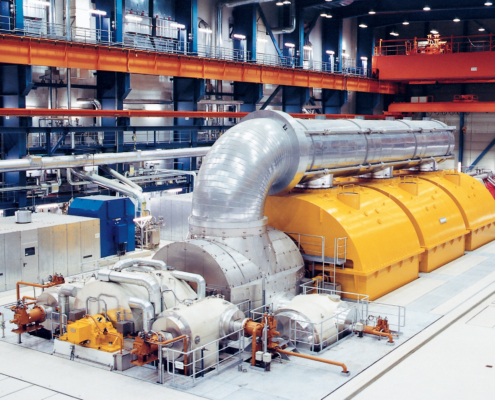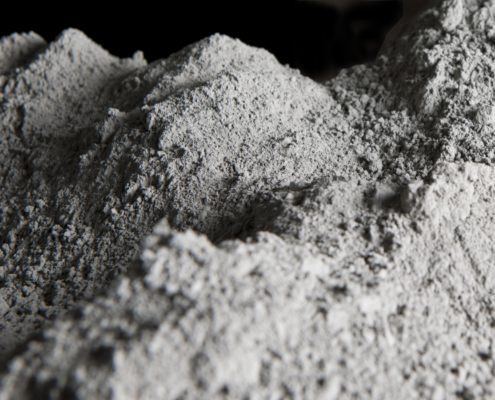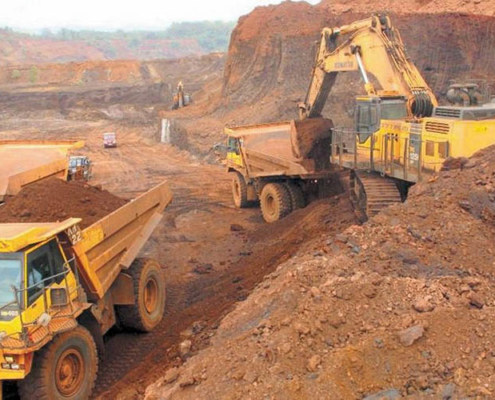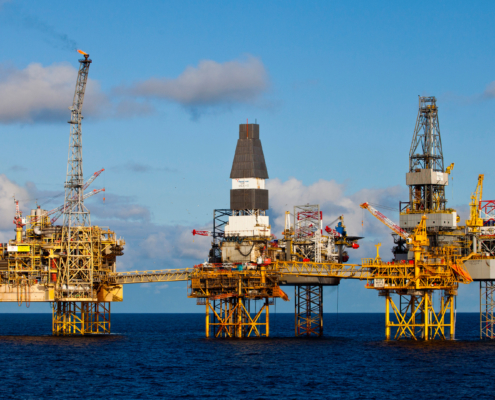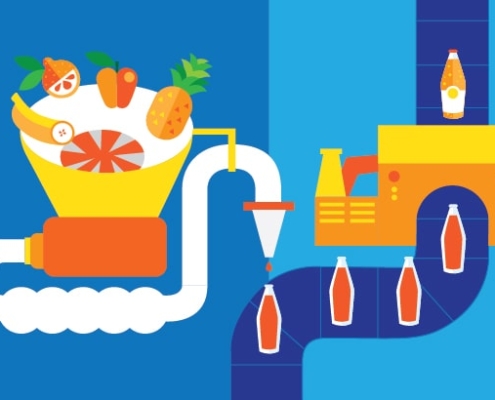CONCRETE
Concrete is a composite material composed of fine & coarse aggregate bonded together with a fluid cement (cement paste) that hardens (cures) over time.
When aggregate is mixed with dry Portland cement & water, the mixture forms a fluid slurry that is easily poured & molded into shape.
The cement reacts with the water & other ingredients to form a hard matrix that binds the materials together into a durable stone-like material that has many uses.
Often, additives (such as pozzolans or superplasticizers) are included in the mixture to improve the physical properties of the wet mix or the finished material.
Most concrete is poured with reinforcing materials (such as rebar) embedded to provide tensile strength, yielding reinforced concrete.
Power generation
Power generation is the process of generating electric power from sources of primary energy.
For utilities in the electric power industry, it is the stage prior to its delivery (transmission, distribution, etc.) to end users or its storage (using, for example, the pumped-storage method).
A power station, also referred to as a power plant & sometimes generating station or generating plant, is an industrial facility for the generation of electric power.
Power stations are generally connected to an electrical grid.
Many power stations contain one or more generators, a rotating machine that converts mechanical power into three-phase electric power.
The relative motion between a magnetic field & a conductor creates an electric current.
CEMENT
A cement is a binder, a substance used for construction that sets, hardens, & adheres to other materials to bind them together.
Cement is seldom used on its own, but rather to bind sand & gravel (aggregate) together.
Cement mixed with fine aggregate produces mortar for masonry, or with sand & gravel, produces concrete.
Concrete is the most widely used material in existence & is only behind water as the planet’s most-consumed resource.
Cements used in construction are usually inorganic, often lime or calcium silicate based, which can be characterized as non-hydraulic or hydraulic respectively, depending on the ability of the cement to set in the presence of water (see hydraulic & non-hydraulic lime.
MINING
Mining & Mineral Processing, comprises the installation of feeders to receive raw materials, belts to transport material, crushing units to break materials into fractions, & screening units to classify materials into piles.
We are providing solutions to build automated processing plants. We also provide washing plants & recovery machines for fine materials coming from residuals processing.
ASPHALT
Asphalt is the sustainable material for building pavements.
It’s smooth, so vehicles consume less fuel & produce lower emissions it’s quiet, so expensive noise walls don’t need to be constructed it’s safe, providing excellent gripping power & it’s durable, so that the road never needs to be removed & replaced.
Asphalt is made from aggregates, bitumen & a filling material.
OIL & GAS
Oil & Gas is Considered being the biggest sector in the world in terms of dollar value, the oil & gas sector is a global powerhouse using hundreds of thousands of workers worldwide & generating hundreds of billions of dollars globally each year.
In regions which house the major NOCs, these oil & gas companies are so vital they often contribute a significant amount towards national GDP.
The energy sector has three key areas: Upstream, midstream & downstream.
Oil & Gas is one of the most dynamic industries in Egypt, & hydrocarbon production is by far the largest single industrial activity in the country representing around 13.6% of the total GDP in 2018.
Egypt has significant energy resources, both in traditional fossil fuels & in renewable energy.
Egypt’s proven hydrocarbon reserves stood at 3.3 billion barrels of oil & 77.2 trillion cubic feet (tcf) of natural gas at the end of 2018.
The Government of Egypt encourages international oil companies (IOC) to participate in the oil & gas sector & currently more than fifty IOCs are operating in Egypt.
FOOD & BEVERAGES
Food & Beverage Services can be broadly defined as the process of preparing, presenting &serving of food & beverages to the customers.
Deriving from the agriculture industry in our definition, the food & beverage industry is divided into two major segments. Those two segments are production & distribution of edible goods.
Our main interst is the Production which includes the processing of meats & cheeses & the creating of soft drinks, , packaged foods, & other modified foods.
The industry is much more focused on technology & mechanical manipulation of raw foods to create more value-added food products than the agricultural industry.

